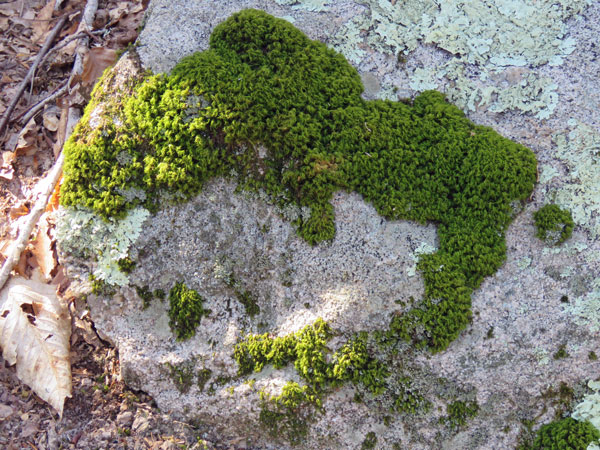
Yesterday we took a side trail in Beebe Pond Park, which led us through a field of glacial erratics and tree shadows, then circled back to the pond.

Some of the boulders were bare and some covered with mosses and lichens. It makes one wonder…

I took so many pictures it was difficult to cull the batch down to size. The weather was perfect and breezy and we met two other pairs of hikers, a father and young son, and two women. All were wearing masks and we exchanged friendly greetings from our six-foot apart positions. The father and son were new to the park and asked us some questions about the trails. It still feels strange interacting with people in the greater world!







Delightful day; first walk in the woods, and what a pleasure it is to be in the forest once more! The earlier buds are swelling perceptibly — those of the scarlet maple and elm flowers on the hills, with the sallows and alders near the streams. We were struck more than usual with the mosses and lichens, and the coloring of the bark of the different trees; some of the chestnuts, and birches, and maples show twenty different shades, through grays and greens, from a dull white to blackish brown. These can scarcely vary much with the seasons, but they attract the eye more just now from the fact that in winter we are seldom in the woods; and at this moment, before the leaves are out, there is more light falling on the limbs and trunks than in summer. The ground mosses are not yet entirely revived; some of the prettiest varieties feel the frost sensibly, and have not yet regained all their coloring.
~ Susan Fenimore Cooper
(Rural Hours)

Six months ago when we visited the pond the severe drought had lowered the water level drastically. You can see a picture on this post: by courtesy of the light But the pond is full to overflowing now, and water is running down the stream.


There was a strong breeze this day, making little waves on the pond.




And of course, I couldn’t resist taking pictures of the leaves left over from autumn.



On Friday it will have been two weeks from my second shot and I will join the ranks of the fully vaccinated. We made appointments to get haircuts and plan to celebrate and have our first restaurant meal in 15 months. Outside. To me, being vaccinated feels like having a parachute. Even with a parachute I don’t want to jump out of an airplane and I think going inside to get a haircut will feel almost as scary as skydiving.



















































































































